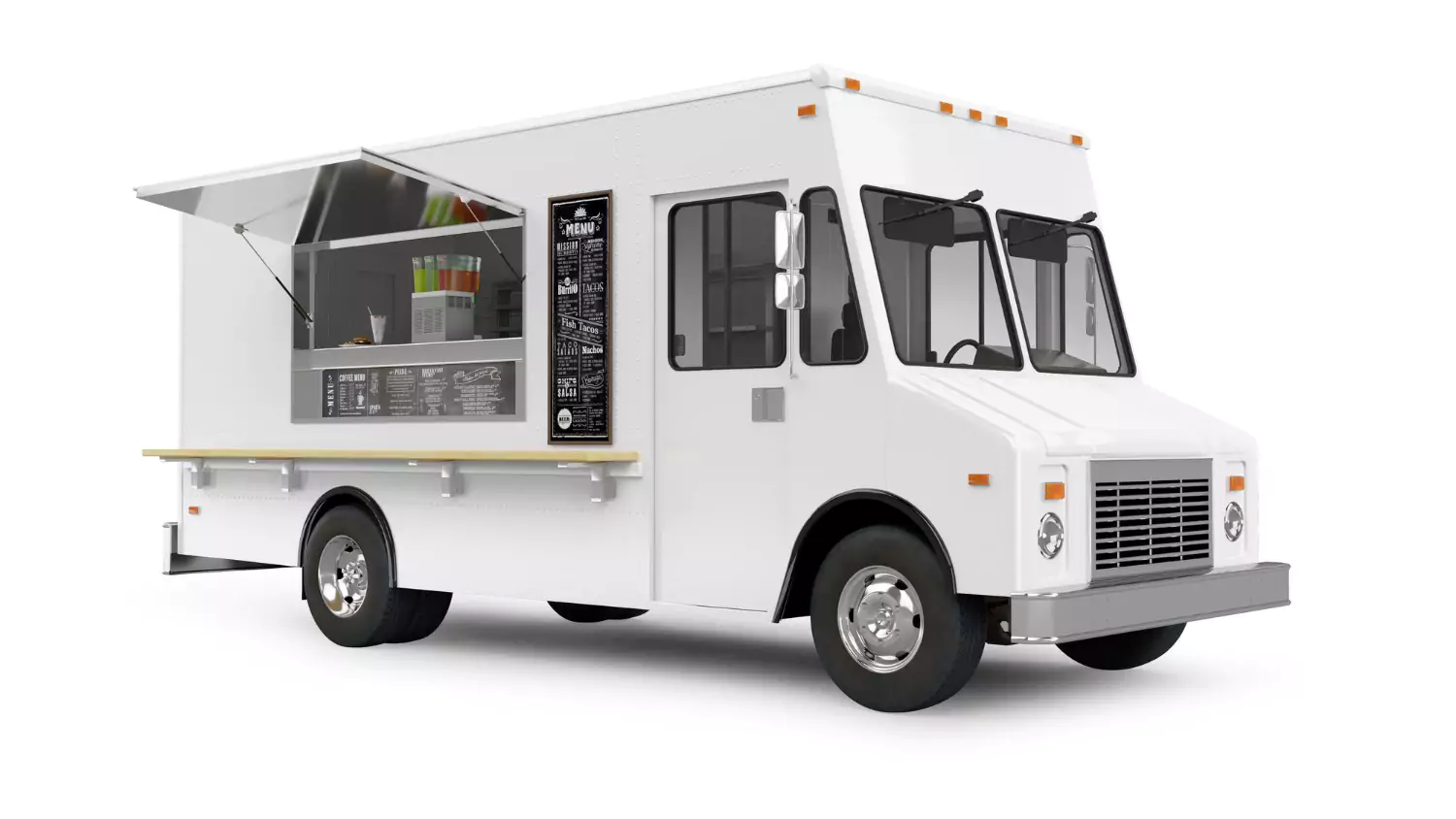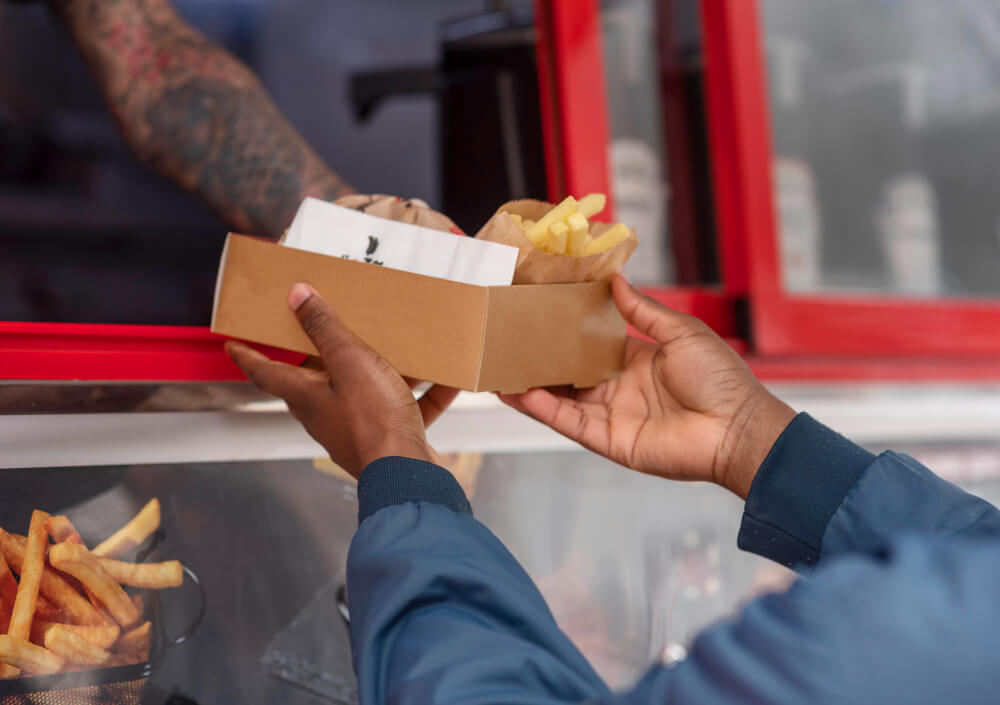How to write a food truck business plan
Getting your own food truck business off the ground requires a business plan. Here is a food truck business plan template that includes the important elements you need to include in your business plan.
Food trucks have become increasingly popular in recent years, as people are drawn to their convenience and affordability. Starting a food truck business can be a great way to get into the food industry without the high upfront costs of opening a traditional restaurant.
However, it’s important to note that food trucks are still a significant investment. The cost of a new food truck can range from $5,000 to over $100,000, and there are many other expenses associated with starting a food truck business, such as permits, insurance, and inventory.
That’s why it’s essential to have a well-written business plan in place before you launch your food truck business. This document will help you to map out your goals, identify your target market, and develop a strategy for success.
As a business plan writer and consultant,I have helped over 5,000 entrepreneurs create business plans to start and grow their food truck businesses.If this is your first time writing a business plan,we’ll provide a step-by-step guide on how to write a food truck business plan. We’ll also cover some of the key elements that you should include in your plan.

What makes a good food truck business plan?
A good food truck business plan is your roadmap to success. It helps you clarify your goals, identify your target market, and develop a strategy to turn your passion into a profitable business.

How to write a food truck business plan step by step
1. Executive summary
Your executive summary is a concise overview of your business plan. Aim for one or two pages, as anything longer is likely to be ignored.To make a good first impression with your executive summary, be concise and interesting, without getting bogged down in the details.
Essential Elements of a Food Truck Business Plan Executive Summary
- What kind of food will you serve?
- What makes your food unique and special?
- Where will you sell your food?
- Who are your ideal customers?
- Why will your food truck be successful in the area where you plan to sell it?
- What sets you apart from the competition?
- What do you hope to achieve with your food truck business in the future?
For example, if you plan to launch “Bite on Wheels” in downtown Los Angeles, your executive summary could begin like this:
Bite on Wheels is a gourmet food truck that will be located in the heart of downtown Los Angeles. Our mission is to bring high-quality, locally-sourced, and globally-inspired cuisine to the bustling urban food scene. With a focus on sustainability and convenience, we aim to provide a memorable dining experience to the busy professionals and food enthusiasts of Los Angeles. We anticipate revenue growth of 15% in the first year, aiming to become a staple in the downtown culinary landscape.
2. Company Description
In this section of your food truck business plan, provide a detailed description of your company. Explain what type of food you serve, your target market, and your competitive advantage. Also, discuss how your food truck business will be a valuable addition to the existing market.
Essential Elements of a Food Truck Business Plan Company Description
- What type of food truck will you use (truck, trailer, or food cart)?
- Why are you choosing to start a food truck business instead of a brick-and-mortar restaurant?
- Where will you prepare your food? In the food truck itself, or in a commissary kitchen?
- How will your food menu items compete with those of existing food trucks and restaurants in your target area?
- What specific customer niche are you targeting?
- What is your unique selling proposition (USP)?
- What sets your food truck apart from the competition?
For example, you can describe your company description as follows:
At Bite on Wheels, our concept revolves around fusion cuisine with a focus on Mexican and Mediterranean flavors. Our branding combines vibrant colors and bold design elements that mirror the energetic spirit of downtown Los Angeles. Our USP is our ‘Build Your Bite’ concept, allowing customers to customize their own dishes from a variety of fresh and savory ingredients. The idea for our food truck was born from a shared passion for culinary adventures and a love for creating unique, flavorful dishes that delight the senses.
3.Market Analysis
Understanding your market is the meat and potatoes of your food truck business plan. Here, you will dig into the details of your target audience, competition, and industry trends.The market analysis section of your food truck business plan is where you will explain how your business will fit into the existing market. This section should include your findings from extensive research on the food truck industry and your target market.
Evaluating Food Truck Marketing Strategies as Part of the Business Plan
- Describe the food truck industry: This includes trends, growth rate, major consumer groups, and any other relevant information.
- Identify your target market: This includes age group, geographic area, socioeconomic status, and other key demographic information.
- Understand your target market's needs and wants: This includes identifying any seasonal trends that could impact your business.
- Define the size and growth potential of your target market: This will help you to determine the potential revenue and profitability of your business.
- Develop a marketing strategy to reach your target market: This includes explaining how you will differentiate yourself from the competition and gain a large percentage of the market share in your geographic location.
- Set competitive prices and gross margin levels: This will help you to generate a profit and ensure the long-term viability of your business.
- Identify your competitors and explain how you will compete: This includes explaining your competitive advantage and how you will make your food truck a viable contender in current and future markets.
- Address any obstacles you may encounter: This includes food codes, governmental regulations, and other challenges that could impact your business.
For instance, you might describe the market in this way:
Los Angeles is a bustling urban center with a diverse population and a thriving food scene. Our target market includes professionals, students, and tourists looking for quick, affordable, and gourmet food options during their busy schedules. We face competition from a variety of food trucks and nearby brick-and-mortar restaurants, but our commitment to using local, organic ingredients and our innovative menu sets us apart. With the food truck industry experiencing double-digit growth annually, we see tremendous potential for success in this vibrant market.

Want to Hire Someone to Write a Business Plan?
It will be helpful to have someone else write your business plan, as they can take a more objective approach and stick with the facts.
4. Organization and Management
Food truck enterprises typically have straightforward structures, often with just one or two owners, and they are commonly organized as limited liability companies (LLCs).
Details Regarding Food Truck Ownership
- What type of business entity will your food truck be? This could be a sole proprietorship, partnership, LLC, or corporation.
- Who are the owners of the food truck business? What is their full name and percentage of ownership?
- What type of ownership do the owners have in the business? This could be common stock, preferred stock, or general partnership interest.
- If the food truck business is incorporated, what is the total number of shares outstanding and the type of stock that each owner holds?
5. Service or Product Line
Elaborate on the specifics of your products or services. Discuss their features, benefits, and how they address customer needs.If applicable, explain the development process and any intellectual property.
Description of Food Truck Menu for Inclusion in the Business Plan
- What type of food will you serve?
- What is your passion for this type of food?
- What makes your food unique and special?
- Why will customers choose your food over the competition?
- Are your recipes well-established or still being developed?
- How do you plan to evolve your menu over time?
- Are you developing any new dishes or products?
- Do you have any plans to expand your business to include multiple food trucks or other types of food service?
- Will you consider attending food truck festivals or booking catering events?
6.Marketing and sales
Marketing is the sauce that brings customers to your food truck. This section outlines your plans for promotion and customer acquisition.
Queries Regarding Marketing and Sales for the Food Truck
- How will you differentiate your food truck from the competition?
- Will you offer lower prices, a unique product, or superior customer service?
- What are your plans for growing your business? Will you hire more employees, acquire more food trucks, or expand your geographic area?
- How will you distribute your products? Will you sell only from your truck, attend food truck festivals, or offer delivery?
- How will you reach your customers? Will you advertise in traditional media, develop a social media presence, or offer rewards and discounts?
- How many sales are necessary for your food truck to be profitable?
- What is a fair price for your products?
- How many days will you take off in a year?
For example, you can describe your marketing strategy as follows:
We will leverage the power of social media to create a strong online presence. Regular posts on platforms like Instagram, Facebook, and Twitter will showcase our mouthwatering dishes and engage with our audience. We’ll run ‘Taco Tuesdays’ and ‘Mediterranean Mondays’ campaigns, offering discounts on selected menu items. Additionally, we’ll implement a loyalty program where customers receive a free item after a certain number of visits, encouraging repeat business.

Free: Business Plan Examples
Do you need help creating a business plan? Check out these six free, proven business plan examples from different industries to help you write your own.
7. Funding Request
In this section, you detail the amount of capital you need to launch and operate your food truck.
Food Truck Funding Plan
- How much startup capital do you need to launch your food truck business?
- Do you anticipate needing additional funding in the future?
- How will you use the funds you receive from investors or lenders?
- What is your repayment plan for any loans you take out?
- What are the potential rewards for investors if your food truck business is successful?
8. Financial Projections
The financial plan may be the most critical component of your business plan. It’s where you determine the precise requirements for your business to succeed and enable you to earn a livelihood.
Projecting Sales for Your Food Truck Venture
Once you have a forecast for your sales, you need to calculate your cost of goods. This is the amount of money you spend on food and supplies to serve your meals. Subtracting your cost of goods from your sales will give you your gross margin. This is a key metric that measures the profitability of your business.
A positive gross margin is a good start, but it’s important to remember that there are other expenses to consider, such as labor costs, rent, and marketing. You’ll need to make sure that your revenue is high enough to cover all of your expenses and generate a profit.
9. Appendix
While not mandatory in every food truck business plan, the appendix section serves as a valuable space to incorporate information that didn’t find a place elsewhere, encompassing product images, construction permits, and letters of recommendation.
FAQs
What is the best food truck business to start?
Consider a gourmet burger food truck, crafting unique creations with premium ingredients. Alternatively, explore authentic Mexican street food with tacos, burritos, and fresh salsas. Another option is to delve into Japanese cuisine, serving sushi rolls, sashimi, and visually appealing dishes.
What is a good budget for food truck marketing?
A good budget for food truck marketing typically ranges from $5,000 to $10,000 per year, but it can vary based on specific marketing strategies and goals.
What sells most in a food truck?
- Gourmet Burgers.
- Tacos.
- Korean BBQ.
- Grilled Cheese. Sandwiches.
- Authentic BBQ Ribs.
What kind of food trucks are most successful?
The most successful food trucks often offer unique and high-quality cuisine, cater to local tastes, and provide excellent customer service. Adapting to trends like vegan options and sustainability can also boost success.
What is the business case for food?
The business case for food revolves around its universal demand, offering a wide range of opportunities in various niches such as restaurants, catering, and food trucks. Success hinges on quality, innovation, and understanding local tastes.
Who is your target market for a food truck?
Prior to developing an effective food truck marketing strategy, it’s essential to have a clear understanding of the intended audience. In this context, the billion-dollar food truck industry primarily caters to middle-class millennials.
